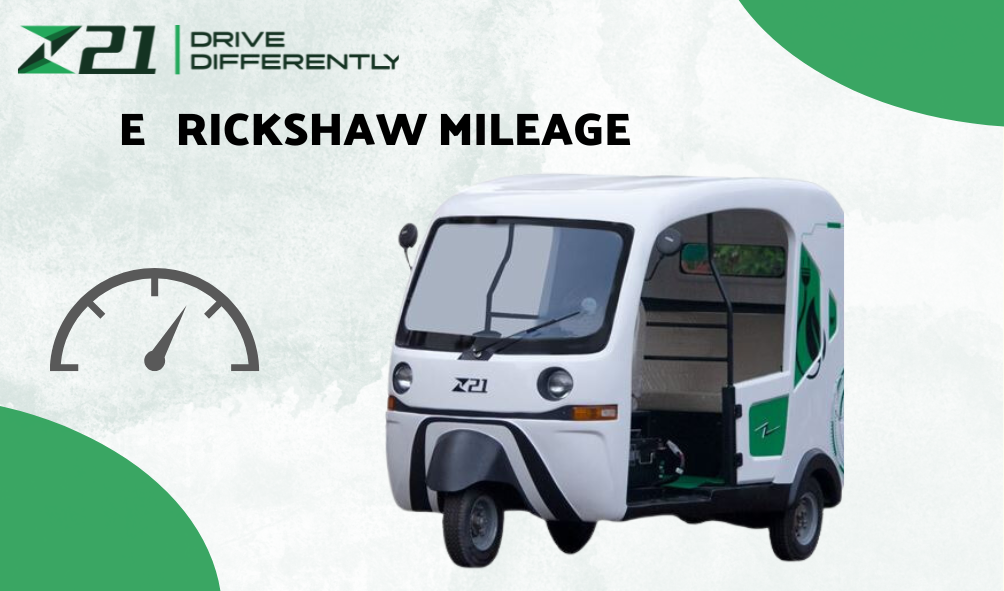E-rickshaws have become a popular choice for urban and short-distance travel, thanks to their low operational costs and eco-friendly nature. For operators and owners, understanding e rickshaw mileage is crucial as it impacts daily earnings and overall efficiency. This guide explores typical mileage expectations for e-rickshaws and tips to maximise their efficiency.
Understanding E Rickshaw Mileage
E rickshaw mileage varies based on several factors, including the type of battery, motor power, and driving conditions. On average, an e-rickshaw with a lead-acid battery can offer a mileage of around 70-90 kilometres per full charge, while those with lithium-ion batteries may achieve 90-120 kilometres per charge. This mileage is ideal for city and short-distance travel, allowing operators to complete multiple trips on a single charge.
Factors Affecting E Rickshaw Mileage
Several elements impact e rickshaw mileage, and understanding these can help owners maintain optimal performance:
- Battery Type
The type of battery used in an e-rickshaw significantly influences mileage. Lithium-ion batteries are more efficient than lead-acid batteries, providing a longer range and faster charging time. Although they have a higher initial cost, lithium-ion batteries are more durable and require less maintenance, making them a worthwhile investment for better mileage. - Load Capacity
An e-rickshaw’s mileage is affected by the weight it carries. Overloading the vehicle puts additional strain on the motor and battery, leading to reduced efficiency. Maintaining optimal load limits helps maximize e rickshaw mileage and enhances battery life. - Driving Speed and Style
Driving speed and habits play a significant role in determining mileage. Consistent speeds and smooth acceleration allow the motor to work efficiently, while frequent stops and rapid accelerations drain the battery faster. Practicing eco-friendly driving techniques can help improve mileage. - Terrain and Road Conditions
E-rickshaw mileage tends to decrease when operating on uneven or uphill roads. Flat, smooth surfaces are ideal for achieving maximum mileage, as rough or hilly terrains require more power from the motor. - Weather Conditions
Extreme temperatures, particularly cold weather, can affect battery performance and reduce mileage. Batteries tend to drain faster in colder conditions, so e-rickshaw operators may experience reduced mileage during winter months.
Tips to Maximize E Rickshaw Mileage
Maximizing e rickshaw mileage is possible with a few simple strategies:
- Opt for Regular Maintenance
Routine maintenance of the e-rickshaw and battery ensures that all components are functioning optimally. Regularly checking the battery, tires, brakes, and motor can prevent performance issues that may affect mileage. - Avoid Overcharging the Battery
Overcharging can damage the battery and reduce its capacity, ultimately impacting mileage. Following the manufacturer’s recommended charging duration helps maintain battery health and improve efficiency. - Use Energy-Saving Accessories
Energy-efficient lighting and accessories can help conserve battery power. By minimizing unnecessary power use, drivers can extend the mileage per charge. - Plan Routes Strategically
Choosing routes with smooth, flat roads and minimal stops can help maximize mileage. Avoiding congested areas where frequent stops are necessary can also help conserve battery power and extend the range. - Upgrade to a Lithium-Ion Battery
If your e-rickshaw currently uses a lead-acid battery, upgrading to a lithium-ion battery can provide better mileage and faster charging. Although this upgrade comes at an upfront cost, the long-term benefits of enhanced efficiency and reduced maintenance make it worthwhile.
Typical Mileage for Popular E Rickshaw Models
Many popular e-rickshaw models offer dependable mileage based on their battery type and design. For instance, models with lithium-ion batteries often deliver longer mileage per charge, typically reaching up to 120 kilometers, while lead-acid battery models average around 80 kilometers. By choosing models with higher efficiency ratings, operators can achieve better daily mileage and reduce operational costs.
Understanding e rickshaw mileage and how to improve it is essential for maximizing efficiency and profitability. By adopting regular maintenance, upgrading to energy-efficient batteries, and driving strategically, operators can extend mileage and reduce operational expenses. For those interested in reliable and efficient e-rickshaw models, Zero21 offers options designed to provide superior mileage and performance, supporting a more sustainable and cost-effective mode of transport.


